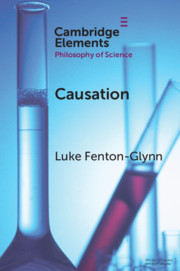Element contents
Causation
Published online by Cambridge University Press: 16 June 2021
Summary
Keywords
- Type
- Element
- Information
- Online ISBN: 9781108588300Publisher: Cambridge University PressPrint publication: 15 July 2021
References
- 15
- Cited by



